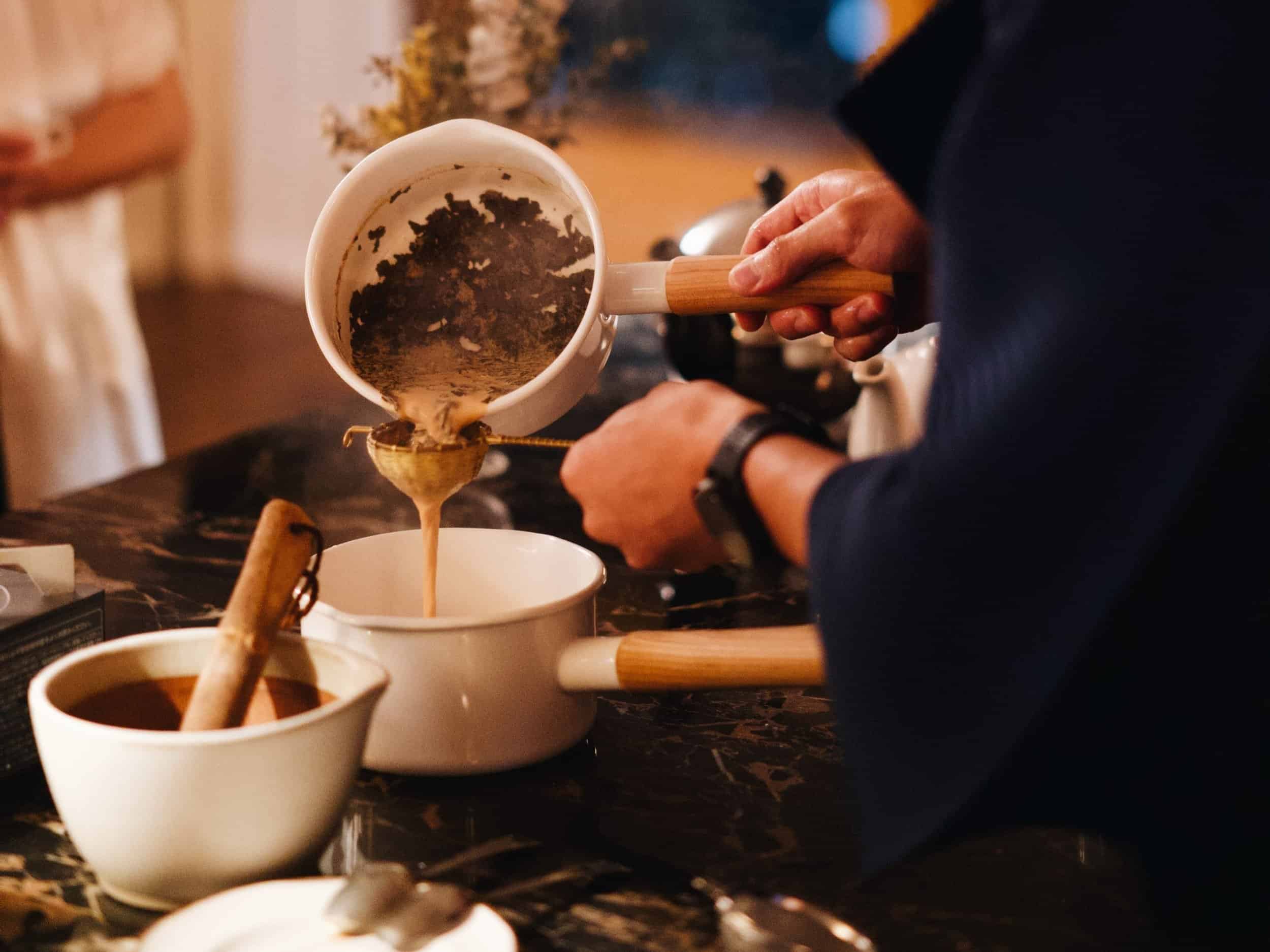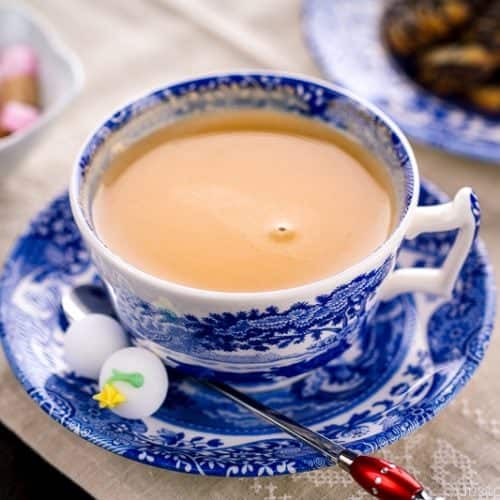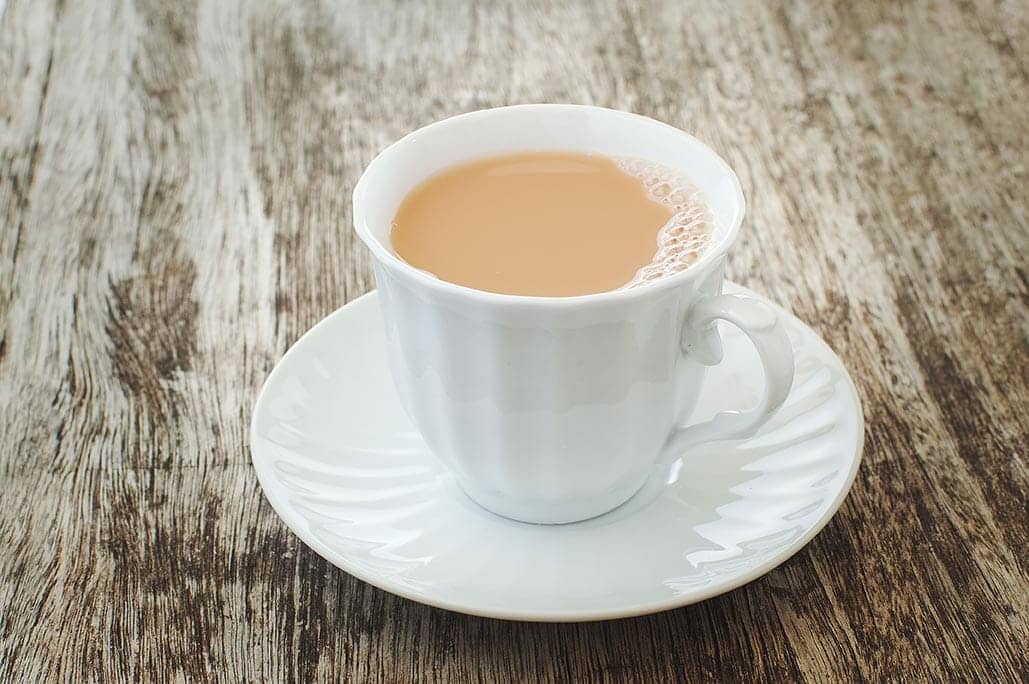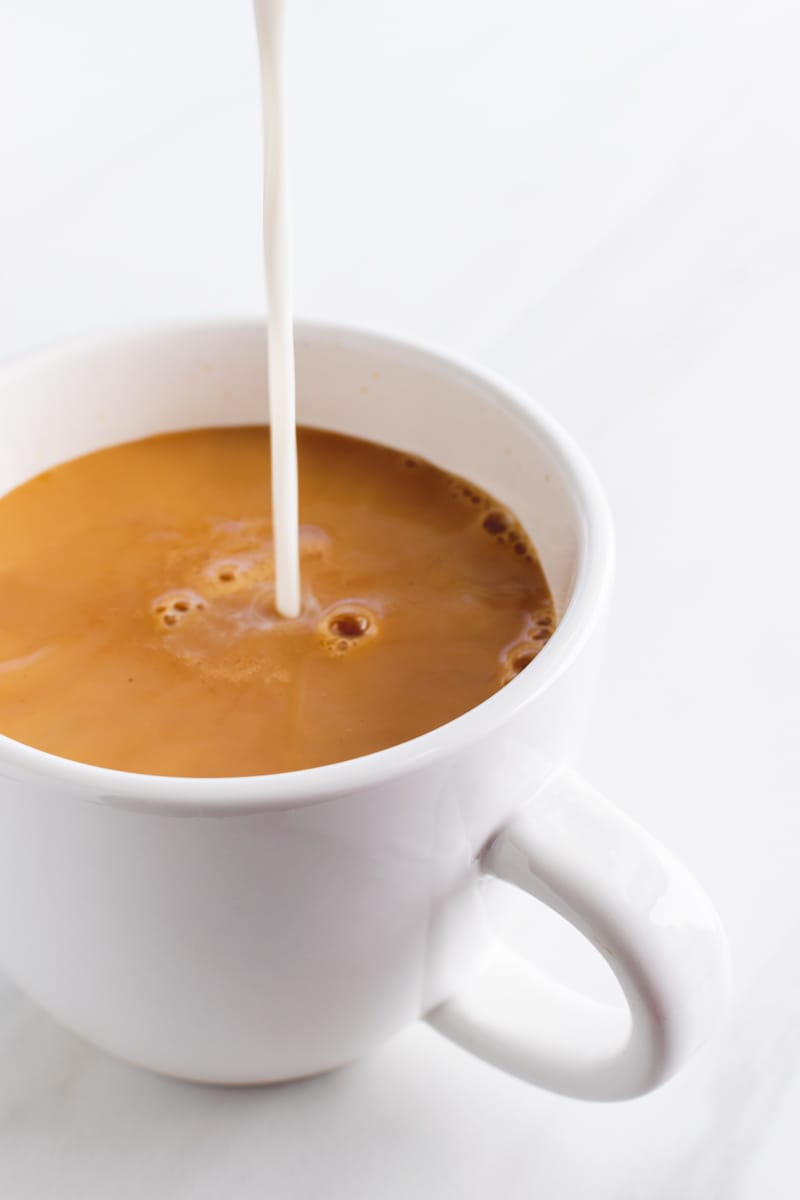Tea with milk is a classic beverage enjoyed by many around the world. There’s something comforting and soothing about sipping on a warm cuppa, especially when it’s made just right. Making the perfect cup of tea with milk requires attention to detail and a few key steps that can elevate your tea-drinking experience to new heights.
In this guide, I will take you through the art of making the perfect cuppa with milk, sharing my personal anecdotes along the way.
Key Takeaways
- Making the perfect cup of tea with milk requires attention to detail and a few key steps.
- Choosing the right tea leaves and understanding water temperature are crucial for a great cuppa.
- Milk plays an important role in tea, and the type and quantity used can affect the taste.
- Proper preparation of your tea pot and cups, as well as knowing how long to steep your tea, are also important factors.
- Adding milk and sweeteners should be done carefully, and serving your cuppa with appropriate accompaniments and etiquette can enhance the experience.
Choosing the Right Tea Leaves for Your Cuppa
The first step in making a great cup of tea with milk is choosing the right tea leaves. Different types of tea leaves have different flavors and strengths, so it’s important to select one that complements the addition of milk. For example, black tea or chai are excellent choices as they have robust flavors that can stand up to the richness of milk.
When selecting your tea leaves, consider factors such as origin, processing method, and flavor profile. Experimenting with different teas can be an exciting journey as you discover new tastes and aromas that pair perfectly with milk.
Understanding the Importance of Water Temperature
Water temperature plays a crucial role in brewing a perfect cuppa with milk. It affects not only the flavor but also determines how strong your tea will be.
For black teas like Assam or English Breakfast, boiling water is best as it helps extract their full-bodied flavors effectively. On the other hand, green teas require cooler water temperatures to prevent bitterness from overpowering their delicate taste profiles.
To achieve optimal results, invest in a good quality kettle or temperature-controlled electric kettle that allows you to set specific temperatures for different types of teas.
The Role of Milk in Tea: Types and Quantities
| Type of Tea | Amount of Milk | Effect on Flavor |
|---|---|---|
| Black Tea | Splash or 1-2 teaspoons | Smoothens and balances the flavor |
| Green Tea | None or a small amount | Can overpower the delicate flavor |
| Chai Tea | 1/4 to 1/2 cup | Essential for the traditional flavor |
| Herbal Tea | None or a small amount | Not typically consumed with milk |
Milk adds depth and creaminess to your cuppa while enhancing its overall flavor profile. Choosing the right type of milk is essential to achieve the perfect balance. Whole milk is a popular choice as it provides a rich and velvety texture, but if you prefer a lighter option, almond milk can be an excellent alternative.
The amount of milk added depends on personal preference and the strength of the tea. Some people prefer just a splash, while others enjoy a more substantial amount. Experiment with different quantities to find your ideal ratio.
Preparing Your Tea Pot and Cups
Before brewing your tea, it’s important to ensure that your tea pot and cups are clean. Any residue or lingering flavors from previous brews can affect the taste of your cuppa.
To warm up your tea pot and cups, rinse them with hot water before use. This step not only helps maintain the temperature of your tea but also prevents it from cooling too quickly once poured.
Steeping Time: How Long to Brew Your Tea
Steeping time is crucial in extracting the desired flavors from your tea leaves without overbrewing them. The duration varies depending on the type of tea and personal preference.
For black teas, such as Earl Grey or Darjeeling, steeping for 3-5 minutes generally yields optimal results. Green teas require shorter steeping times ranging from 1-3 minutes to avoid bitterness.
Experimentation is key here as everyone’s taste buds are unique. Adjusting steeping times allows you to tailor each cuppa according to your preferences.
The Art of Pouring: Tips for a Steady Hand
Pouring your brewed tea into cups requires finesse and precision to avoid spills or splashes that could ruin an otherwise perfect cuppa experience.
Hold the teapot close to the cup while pouring slowly and steadily in one fluid motion. This technique minimizes any chances of splashing or creating messes that could dampen both literal and metaphorical spirits during teatime gatherings with friends or family.
Adding Milk: When and How to Do It
Adding milk to your tea is a crucial step that should be done with care. It’s best to add milk after the tea has steeped, as adding it during the brewing process can interfere with the extraction of flavors from the leaves.
When pouring milk into your cup, do so slowly and gently while stirring gently with a spoon. This ensures that the milk blends seamlessly into your tea without curdling or creating an uneven mixture.
Sweetening Your Tea: Sugar, Honey, or Other Alternatives?
Sweetening your cuppa is a matter of personal preference. Some enjoy their tea unsweetened, while others prefer a touch of sweetness to balance out any bitterness or enhance the overall flavor profile.
Sugar is a classic choice for sweetening tea, but honey can also add depth and complexity to certain types of teas. For those looking for healthier alternatives, stevia or agave nectar can be excellent options that provide natural sweetness without added calories.
Experimenting with different sweeteners allows you to discover unique flavor combinations that suit your taste buds perfectly.
Serving Your Cuppa: Accompaniments and Etiquette
Serving your perfect cuppa goes beyond just pouring it into cups; it involves creating an entire experience for yourself and others around you.
Consider serving your tea with accompaniments such as biscuits or scones for an indulgent treat during teatime gatherings. These delectable treats complement the flavors of tea beautifully while adding an extra touch of elegance to any occasion.
Additionally, following proper tea etiquette adds sophistication and charm to every sip you take. Hold your teacup delicately by its handle (or if using a handleless cup like me), cradle it in both hands near its base while keeping one’s pinky finger down – contrary to popular belief; this gesture signifies refinement rather than snobbery.
Enjoying the Perfect Cuppa Every Time
In conclusion, making the perfect cup of tea with milk is an art that requires attention to detail and a few key steps. By choosing the right tea leaves, understanding water temperature, adding milk in appropriate quantities, and following proper brewing techniques, you can create a cuppa that delights your senses every time.
Remember to experiment with different teas, milk options, sweeteners, and accompaniments to find your personal preference. With this guide as your companion on your tea journey, you can enjoy the perfect cuppa every time – whether it’s a quiet moment of solitude or a delightful gathering with loved ones. So go ahead and brew yourself a cup of perfection; you deserve it!
FAQs
What is the perfect cuppa?
The perfect cuppa is a cup of tea that is brewed to perfection and served with milk, according to personal preference.
What type of tea is best for making the perfect cuppa?
Black tea is the most commonly used tea for making the perfect cuppa. However, other types of tea such as green tea, white tea, and herbal tea can also be used.
What is the ideal water temperature for brewing tea?
The ideal water temperature for brewing tea depends on the type of tea being used. For black tea, the water temperature should be around 212°F (100°C). For green tea, the water temperature should be around 160-180°F (71-82°C).
How long should tea be steeped for?
The steeping time for tea depends on the type of tea being used. For black tea, the ideal steeping time is 3-5 minutes. For green tea, the ideal steeping time is 1-3 minutes.
How much milk should be added to tea?
The amount of milk added to tea depends on personal preference. However, a general rule of thumb is to add 1-2 tablespoons of milk per cup of tea.
Should milk be added before or after brewing tea?
Milk should be added after brewing tea. Adding milk before brewing can result in a weaker cup of tea.
What type of milk is best for making tea?
Whole milk is the best type of milk for making tea. However, other types of milk such as skim milk, almond milk, and soy milk can also be used.
Originally posted 2024-01-13 16:50:56.





